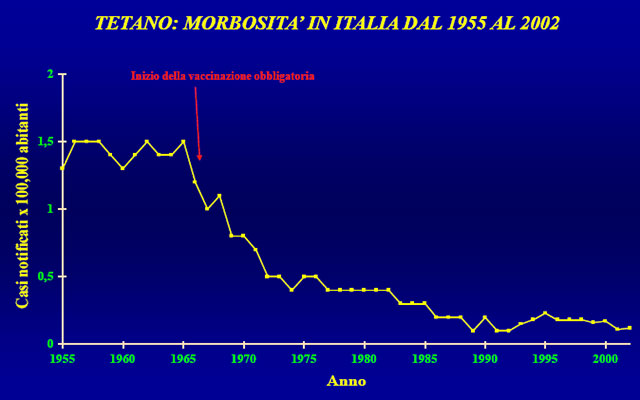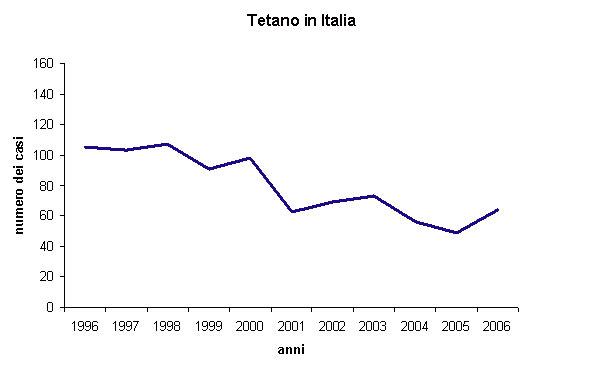Vaccinating against Tetanus
The epidemiological curves comparing pre- and post-vaccination periods show a sharp decrease in the number of cases over the years. It is clear that vaccinations have significantly changed the incidence of diseases for which immunisation exists, thus saving lives, reducing disease outcomes, reducing overall population suffering and improving quality of life.
The disease before and after the vaccination campaign in Italy
The current epidemiology of tetanus in Italy reflects the vaccination offer over the years. In fact, since 1963, the vaccination has been on the schedule for all newborns, and more than 90% of children have been vaccinated in over 20 years. Extensive vaccination has meant that the total number of cases has been reduced by 86% from the mid-1950s to today. Currently, tetanus affects mainly elderly people who are not vaccinated or inadequately vaccinated. Unlike the situation with diseases that are transmitted from person to person, therefore, the achievement of high vaccination coverage does not provide for an indirect protection effect of the whole population (herd immunity). Furthermore, the ubiquitous presence in the environment of tetanus spores makes it impossible to eliminate the disease. As such, any individual who is not adequately vaccinated is potentially at risk of getting this infection.
DTaP vaccine (Diphtheria - Tetanus - acellular pertussis)

From the second half of the 1950s until the first half of the 1960s, there were on average 722 reported cases of tetanus per year (1.4 cases per 100,000 inhabitants). Subsequently, and until the first half of the 1970s, there was a sharp reduction in the number of cases, a phenomenon that coincided with the introduction of mandatory vaccination in children in the early 1960s. Subsequently, the decrease in cases occurred more gradually, reaching a record low of 49 cases in 2005 (from 105 cases in 1996). The last case of neonatal tetanus dates back to 1982.

Number of tetanus cases in Italy from 1996 to 2006 (source: Ministry of Health)
According to WHO (World Health Organization) data, 15,516 cases of tetanus were reported worldwide in 2005 and, from 2000 until 2003, 290,000 deaths were estimated. Despite the great successes achieved, the incidence of tetanus in Italy is about 10 times higher than the European and US average. It remains therefore essential to offer vaccination to those who are not vaccinated, especially the elderly, and to verify that boosters are being administered. It is also important to check vaccine status for tetanus following minor injuries, so as to perform post-exposure prophylaxis if necessary.



